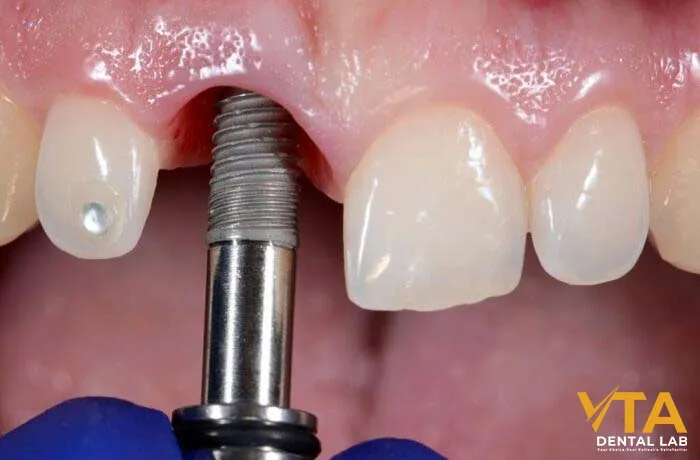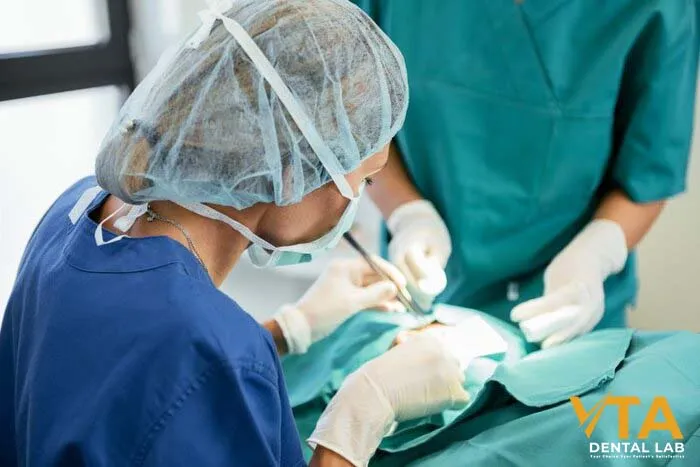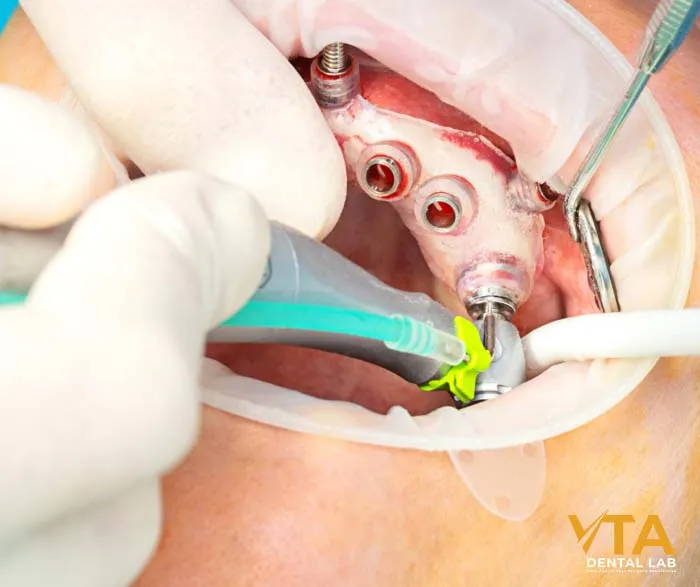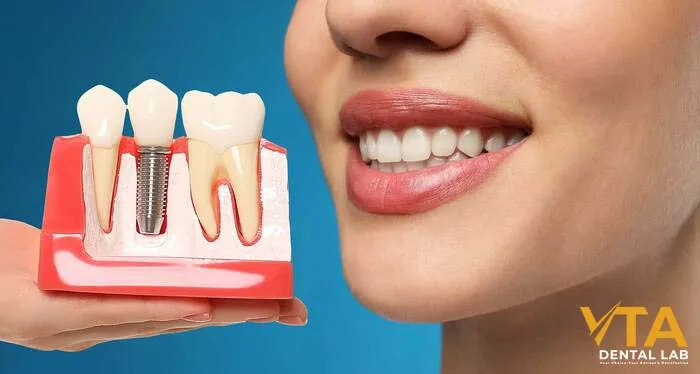Dental Implant Procedure: What to Expect
The dental implant procedure is a reliable and effective solution for replacing missing teeth, offering long-lasting results and improved oral health. Whether you’re considering a single tooth replacement or a full-mouth restoration, understanding the dental implant procedure can help you make informed decisions about your oral health.
Overview of Dental Implant Procedure
Dental implants are the best way to replace missing teeth. By placing a titanium post into the jawbone to act as a tooth root, a stable foundation is created for fixed tooth replacements that match your natural teeth. The abutment implant is a small connecting post that is screwed into the implant post and protrudes above the gumline to connect with the new prosthetic tooth. The prosthetic tooth is a restoration that replaces the missing tooth and can be crowns, bridges, or dentures.

Most dental implants use titanium posts, though some are zirconia. Both materials are safe, biocompatible, and gentle on the gum tissues in the mouth.
Another thing to consider is that the dental implant procedure can treat tooth loss due to cavities, chipped or cracked teeth, gum disease, undeveloped teeth, or other reasons, and is ideal for individuals who prefer not to wear dentures.
The Prepare to Dental Implant Produce
The dental implant procedure is carried out based on the condition of the jawbone and the type of implant suitable for the patient. Additionally, dental implants may require one or more procedures, so patients need to be thoroughly evaluated to prepare for the process:
Comprehensive Examination: To assess their condition, patients will undergo X-rays, 3D scans of the jaw, and dental models.
Medical History: Patients should inform the dentist about any medical conditions and medications they are taking. If they have heart issues or require orthopedic surgery, the dentist will prescribe antibiotics before the procedure to help prevent infections.
Treatment Plan: The dentist will design a tailored treatment plan and timeline based on each patient’s medical condition. This plan will consider the number of teeth that need to be replaced, the jawbone condition, and the remaining teeth.

During the implant procedure, pain control options, including local and general anesthesia, are available. Patients should discuss these with their dentist to determine the best choice. Additionally, the dentist will provide guidance on dietary restrictions, depending on the type of anesthesia used.
Dental Implant Procedure and Recovery
Evaluate on dental implant procedure
The first step is to evaluate the condition of your teeth, gums, and jawbone. The dentist will initially assess whether you have enough healthy jawbone to support the implant. If your bone is too thin or soft, the bone graft or other procedures may be recommended before starting the dental implant process. In particular, if your gums are affected by periodontal disease, that will need to be treated first.
Dental implants are performed to replace one or more teeth and the number of teeth to be replaced determines the type and extent of implant procedures.

Implant Placement on dental implant procedure
If using endosteal inplants:
- The dentist will perform surgery to cut the gum, exposing the underlying jawbone
- Holes will be drilled deep into the jawbone at the site where the implant post will be inserted.
- Once the implant post is placed, a temporary denture can be placed over the hole, for aesthetic purposes, until the permanent prosthetic tooth is fitted
If choosing subperiosteal implants:
- The jawbone will not be affected, and the implant post will be placed on top of the bone.
Regardless of which type of implant you choose, you will experience some discomfort and swelling. This can last for about a week, after which you can resume your daily activities following the implant procedure.

Bone Integration Process
After the dental implants are placed, it takes about 2 to 6 months for new bone to grow around the implant post, a process known as “osseointegration”. During healing stages, the natural jawbone strengthens and develops around the implant post, ensuring that it is securely anchored in place and can function as an artificial tooth root.
Implant abutment placement
The abutment can either be attached to the implant during the initial post-placement or a minor second surgery with local anesthesia. The abutment serves as a connection between the implant post and the replacement tooth (prosthetic). If the replacement tooth is placed during the second procedure, a small incision might be needed if the gum tissue has grown over the implant.
In this second procedure, the healing cap is removed, and the abutment is screwed into the dental implant. The gum tissue will then heal around the abutment, which takes a few weeks after attachment.

Taking Dental Impressions
Once healing is complete, the dentist will take an impression of the teeth to design a ceramic crown that matches the size and shape of the jaw, ensuring aesthetic and functional bite restoration. These crowns can be fixed or removable.
Fabricating the Dental Restoration
The impression is sent to a dental laboratory where the next steps in crafting the ceramic restoration are carried out. This process uses advanced technology, such as CAD/CAM, combined with the skilled craftsmanship of the technicians to ensure that the ceramic restoration is precise, aesthetically pleasing, and durable.
Placing the Crown on dental implant procedure
- For removable crowns, the crown is attached to a metal framework and connected to the implant post. These crowns can be removed and cleaned at home daily.
- For fixed crowns, the crown is permanently attached to the abutment with cement or screws.
The dentist will test, adjust, and securely attach the ceramic restoration to the patient’s implant, ensuring proper bite alignment and comfort. The new tooth will look and feel natural. Daily oral hygiene, including brushing and flossing, is essential to keep the restoration clean.

After the procedure, it’s important to inform your dentist if you experience any of the following:
- Persistent discomfort
- Severe pain
- Bleeding
- Swelling that lasts several days
- Misaligned or uncomfortable bite
After the surgical stages, patients should eat soft foods to allow the surgical site to heal quickly. Additionally, they may need to take pain relievers or antibiotics following the completion of the dental implant surgery.

Summary
Tooth loss has a negative impact on the patient’s oral health and function when chewing or speaking in daily activities. Dental implants are a long-term solution to replace missing teeth and the dentist can design a treatment plan according to the patient’s individual condition and needs whether you are missing one tooth or many teeth.
VTA Dental Lab is proud to be a leading provider of high-quality dental products, combining cutting-edge technology with the expert craftsmanship of our skilled technicians. From crowns to implants, every solution we offer is custom-designed to meet the unique needs of each patient, ensuring a perfect fit and natural appearance. At VTA, we are committed to precision, durability, and exceptional aesthetics, helping restore confident smiles with every case. Choose VTA Dental Lab for excellence in dental restorations, contact us today for more information!